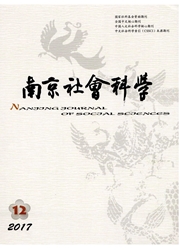

 中文摘要:
中文摘要:
事业单位中普遍存在着用工"双轨制"现象。编内员工与编外员工在"人口特征"与"工作特征"等方面日益趋同,而在政治待遇、经济保障以及社会认可等方面差异却不断扩大的现实,正在成为社会矛盾和劳动关系紧张的根源。本文通过构建包括政治、经济与社会的三维劳动关系分析模型,分析用工"双轨制"的现实差异与潜在危机,提出未来并轨的可能路径和相应的策略。
 英文摘要:
英文摘要:
Nowadays dual-track employment system is still widely applied by public institutions in China.The differences of "demographic characteristic" and "work characteristic" between employers affiliating to institution and employers non-affiliating to institution are becoming smaller,while the gaps of "political rights","economical security" and "social recognition" between these two groups of employers are getting larger.This reality inevitably creates social conflicts and tensions in the labor force relationship.This paper analyzes the differences and potential risks by bringing up a three-dimension model from political aspect,economic aspect and social aspect.Also,this paper attempts to give some suggestions and feasible strategies on how to merge the dual tracks and how to relieve the tensions as well.
 同期刊论文项目
同期刊论文项目
 同项目期刊论文
同项目期刊论文
 期刊信息
期刊信息
